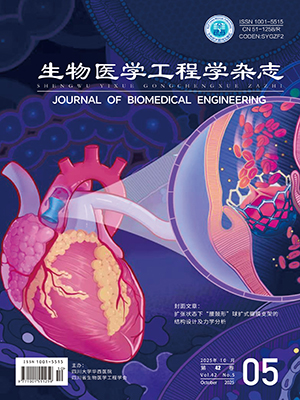| 1. |
常凤, 赵文艳, 魏亚茹, 等. LIPC-514C/T多态性与运动干预PDM人群血糖及健康体适能疗效的关联研究. 中国体育科技, 2023, 59(12): 62-69.
|
| 2. |
中国老年护理联盟, 中南大学湘雅护理学院(中南大学湘雅泛海健康管理研究院), 中南大学湘雅医院(国家老年疾病临床医学研究中心), 等. 认知衰退老年人非药物干预临床实践指南: 身体活动. 中国全科医学, 2023, 26(16): 1927-1937,1971.
|
| 3. |
季谋芳, 李若冰, 胡廷进, 等. 不同非药物干预方式对产后抑郁症患者影响的网状meta分析. 中华护理杂志, 2024, 59(2): 228-235.
|
| 4. |
邢双涛, 冯世杰, 关朝阳. 不同运动对老年人骨密度影响的网状meta分析. 中国骨质疏松杂志, 2024, 30(3): 348-354.
|
| 5. |
Plews D J, Laupsen P B, Stanley J, et al. Training adaptation and heart rate variability in elite endurance athletes: opening the door to effective monitoring. Sports Med, 2013, 43(9): 773-781.
|
| 6. |
Mishica C, Kyröläinen H, Hynynen E, et al. Relationships between heart rate variability, sleep duration, cortisol and physical training in young athletes. J Sport Sci Med, 2021, 20(4): 778-788.
|
| 7. |
Lechner S, Ammar A, Boukhris O, et al. Monitoring training load in youth soccer players: effects of a six-week preparatory training program and the association between external and internal loads. Biol Sport, 2023, 40(1): 63-75.
|
| 8. |
Bellinger P. Functional overreaching in endurance athletes: a necessity or cause for concern?. Sports Med, 2020, 50(6): 1059-1073.
|
| 9. |
Fitz-Clarke J R, Morton R H, Banister E W. Optimizing athletic performance by influence curves. J Appl Physiol, 1991, 71(3): 1151-1158.
|
| 10. |
Imbach F, Sutton-Charani N, Montmain J, et al. The use of fitness-fatigue models for sport performance modelling: conceptual issues and contributions from machine-learning. Sports Med Open, 2022, 8(1): 29.
|
| 11. |
Calvert T W, Banister E W, Savage M, et al. Systems model of the effects of training on physical performance. IEEE Trans Syst Man Cybernet, 1976, 6(12): 94-102.
|
| 12. |
Banister E W, Hamilton C L. Variations in iron status with fatigue modelled from training in female distance runners. Eur J Appl Physiol Occup Physiol, 1985, 54(1): 16-23.
|
| 13. |
Scott A L, Spaniol F J, Ocker L, et al. The application of a systems model to the training and performance of adolescent swimmers. J Strength Cond Res, 2011, 25: S27-S28.
|
| 14. |
Wallace L K, Slattery K M, Coutts A J. A comparison of methods for quantifying training load: relationships between modelled and actual training responses. Eur J Appl Physiol, 2014, 114(1): 11-20.
|
| 15. |
Stephens H B H, Burgess K E, Elyan E, et al. The effects of measurement error and testing frequency on the fitness-fatigue model applied to resistance training: a simulation approach. Int J Sports Sci Coach, 2020, 15(1): 60-71.
|
| 16. |
曹宏庆, 康立山, 陈毓屏. 高阶常微分方程的动态演化建模. 武汉大学学报(自然科学版), 2000, 46(1): 19-23.
|
| 17. |
曹宏庆, 康立山, 陈毓屏. 高阶常微分方程的演化建模用于时间序列的分析. 小型微型计算机系统, 2000, 21(4): 344-349.
|
| 18. |
Busso T, Candau R, Lacour J R. Fatigue and fitness modelled from the effects of training on performance. Eur J Appl Physiol Occup Physiol, 1994, 69(1): 50-54.
|
| 19. |
何勇, 虞丽娟, 吴卫兵. 训练负荷—体能状态数学模型的建立及参数估计. 上海体育学院学报, 2011, 35(2): 57-60.
|
| 20. |
Saboul D, Balducci P, Millet G, et al. A pilot study on quantification of training load: the use of HRV in training practice. Eur J Sport Sci, 2016, 16(2): 172-181.
|
| 21. |
赵海燕, 王林霞, 赵德峰, 等. 心率变异性指标RMSSD和TLHRV在持续性运动训练负荷监控中的有效性研究. 中国运动医学杂志, 2018, 37(6): 461-467.
|
| 22. |
Busso T, Häkkinen K, Pakarinen A, et al. A systems model of training responses and its relationship to hormonal responses in elite weight-lifters. Eur J of Appl Physiol Occup Physiol, 1990, 61(1-2): 48-54.
|
| 23. |
Vermeire K, Ghijs M, Bourgois J G, et al. The fitness-fatigue model: what's in the numbers?. Int J Sports Physiol Perform, 2022, 17(5): 810-813.
|
| 24. |
仇乃民. 运动员竞技能力非线性系统理论构建研究. 天津体育学院学报, 2015, 30(1): 58-65.
|
| 25. |
Chuckravanen D, Bulut S, Kürklü G B, et al. Review of exercise-induced physiological control models to explain the development of fatigue to improve sports performance and future trend. Sci Sports, 2019, 34(3): 131-140.
|
| 26. |
Ludwig M, Asteroth A, Rasche C, et al. Including the past: performance modeling using a preload concept by means of the fitness-fatigue model. Int J Comput Sci Sport, 2019, 18(1): 115-134.
|
| 27. |
胡海旭. 竞技能力增长理论模型及其演进. 体育科学, 2016, 36(2): 14-24, 40.
|
| 28. |
Marrier B, Robineau J, Piscione J, et al. Supercompensation kinetics of physical qualities during a taper in team-sport athletes. Int J Sports Physiol Perform, 2017, 12(9): 1163-1169.
|
| 29. |
Banister E W, Carter J B, Zarkadas P C. Training theory and taper: validation in triathlon athletes. Eur J Appl Physiol Occup Physiol, 1999, 79(2): 182-191.
|
| 30. |
Busso T, Carasso C, Lacour J R. Adequacy of a systems structure in the modeling of training effects on performance. J Appl Physiol, 1991, 71(5): 2044-2049.
|
| 31. |
Granero-Gallegos A, González-quílez A, Plews D, et al. HRV-based training for improving VO2max in endurance athletes. a systematic review with meta-analysis. Int J Environ Res Public Health, 2020, 17(21): 7999.
|
| 32. |
da Silva D F, Ferraro Z M, Adamo K B, et al. Endurance running training individually guided by HRV in untrained women. J Strength Cond Res, 2019, 33(3): 736-746.
|
| 33. |
Schaffarczyk M, Rogers B, Reer R, et al. Fractal correlation properties of HRV as a noninvasive biomarker to assess the physiological status of triathletes during simulated warm-up sessions at low exercise intensity: a pilot study. BMC Sports Sci Med Rehabil, 2022, 14(1): 203.
|
| 34. |
Schüttler D, Hamm W, Bauer A, et al. Routine heart rate-based and novel ECG-based biomarkers of autonomic nervous system in sports medicine. Dtsch Z Sport Med, 2020, 71(6): 141-149.
|
| 35. |
Buchheit M, Simon C, Charloux A, et al. Relationship between very high physical activity energy expenditure, heart rate variability and self-estimate of health status in middle-aged individuals. Int J Sports Med, 2006, 27(9): 697-701.
|
| 36. |
陈小平. 运动训练的基石——“超量恢复”学说受到质疑. 首都体育学院学报, 2004, 16(4): 3-7.
|




